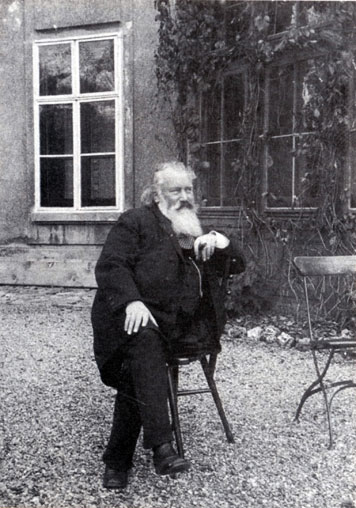The 20-year gestation of this symphony is related to two factors – Brahms’ own self-criticism of his work and the public’s expectation that Brahms would continue “Beethoven’s inheritance” and produce a symphony of depth and scope equal or superior to Beethoven’s monumental Ninth Symphony.
This would be a daunting task for any composer. For Brahms, it was almost paralyzing. This first symphony was finally completed in 1876, when he was 43 years old.
The symphony opens with a turbulently powerful melody underscored by the relentless pounding of the timpani and basses. The movement is dark and brooding, angry and restless. The rich counterpoint of this movement is modeled less on Beethoven or Schumann and more related to the polyphony of musical ideas associated with Bach. Brahms merges a baroque era, fugue-like structure with the scale and power of a modern symphonic orchestra.
The second movement begins with a lyrical, melodic, rising phrase, first in the violins, then in the other sections. Like the first movement, it is introverted and reflective in nature, although it warms at the end with a sense of hope, first with a trio featuring oboe, French horn, and solo violin, and then with a beautiful violin solo, echoed by the French horn.
The third movement, in contrast to the typical, frantic Beethoven Scherzo, places us in a calm, wandering state. It features woodwinds, especially clarinets. Its relaxed, serene style is a welcome respite from the tension and intensity of the symphony’s outer movements.
The immense finale is Brahms’ clearest homage to Beethoven’s Ninth Symphony. As with that masterpiece, it begins with a dramatic introduction and chorale theme. Even the key of c minor, with its twist to C major at the end, can be considered parallel to Beethoven’s Ninth Symphony in d minor. The horn calls, after the introduction and before the chorale, are based on traditional Alphorn music Brahms heard on a trip to the Alps. What follows is one of the most famous and moving melodies in all of Brahms’ writing; a melody with a clear resemblance to the famous “Ode to Joy” in Beethoven’s Symphony No. 9. When one thinks of the First Symphony, it is this beautiful melody that often comes to mind.
Symphony No. 1 in C Minor
Op. 68
Composed in 1876
By Johannes Brahms






